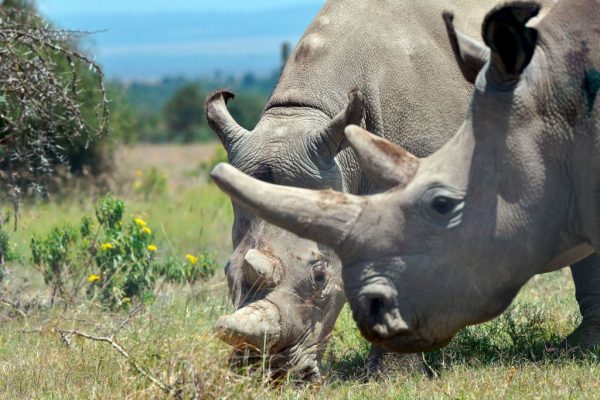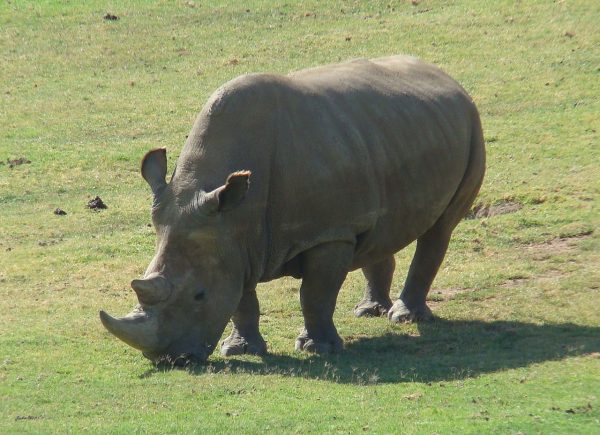Huge Step in Reviving the Highly Endangered Northern White Rhino
Due to recent innovations in egg extraction, scientists have completed one more task in their quest to save the Northern White Rhino. This development is just one more step in a long process designed to save the subspecies from total extinction.
According to Livescience.com, the Northern White Rhinoceros has been extinct in the wild since 2007 or 2008. Since then, researchers and biologists have been working to execute a plan to collect eggs and sperm from the remaining members of the species, which live in zoos across the world.
The first step, which was the extraction of sperm samples from three northern white rhino males, was fairly easy. The samples, taken from rhinos named Suni, Sudan, and Saut, were frozen and put away in hopes that eggs could be harvested from their remaining female counterparts.

Suni, Sudan, and Saut have since died, leaving Fatu and Najin, a mother and daughter pair, as the only remaining animals of their kind. Getting eggs from them, however, has been quite complicated. According to Phys.org, the risky procedure was developed over many years and the research required cooperation from over 15 European zoos.
There, the techniques were tested on Southern White Rhinos and improved to minimize the risk to Fatu and Najin. Their deaths would mean the end of an entire subspecies of Rhinoceros.
Their years of hard work culminated in a procedure that was carried out on Thursday, September 22nd at the OI Pejeta Conservancy in Kenya. The operation was successful, and the eggs were taken to a laboratory in Italy, according to Phys.org. There, the eggs underwent in-vitro fertilization, or IVF, with the sperm samples from the male rhinos.
Seven of the ten eggs were viable after harvesting and only two developed into mature embryos following fertilization. That means scientists still have only a small chance of success. The embryos are now frozen, awaiting yet another procedure. Embryo transfer has not yet been perfected in rhinos, so biologists continue to face big hurdles, with very few chances of getting things right.

Another complication that adds to the difficulty is the declining health of the only two remaining Norther White Rhinos in the world. Fatu and Najin are not healthy enough to carry a pregnancy to full term. Even if the embryos were to take hold in the rhinos’ uteruses, which is not likely considering age and other issues, they would likely not make it to birth. Thus, all hopes of reviving this highly endangered species would be dashed.
Instead of attempting to let Fatu and Najin carry their own embryos, they will instead be implanted in females of the closely related Southern White Rhino.
This will result in rhino calves that have the genetic makeup of the Northern White Rhinoceros but were simply carried by rhinos of a different subspecies. Since Southern White Rhinos have a greater population, there is a greater likelihood of finding a healthy host for the mature embryos.
Scientists main concern during this time, however, is ensuring that as many eggs as possible are harvested from Fatu and Najin before they die. They carry the only remaining hope that scientists have for reversing the impending extinction that this subspecies is facing. Biologists plan on getting as many chances as possible for keeping the Northern White Rhinoceros alive.
According to Livescience.com, even with the efforts that are currently being made, there is not enough genetic diversity to truly bring the species back from the brink of extinction.
To do that, researchers must find a way to develop stem cells, which will allow for the creation of sperm and eggs from the much larger tissue samples that are still available.
Another Article From Us: The Royal Bengal Tiger Is Declared Safe In India
Although chances still seem slim, the completion of this most recent step is a huge win for the biologists and researchers working to resurrect the Northern White Rhinoceros population. They have crossed huge hurdles and only a few remain until the next generation is born and the hope of revival becomes much greater.





